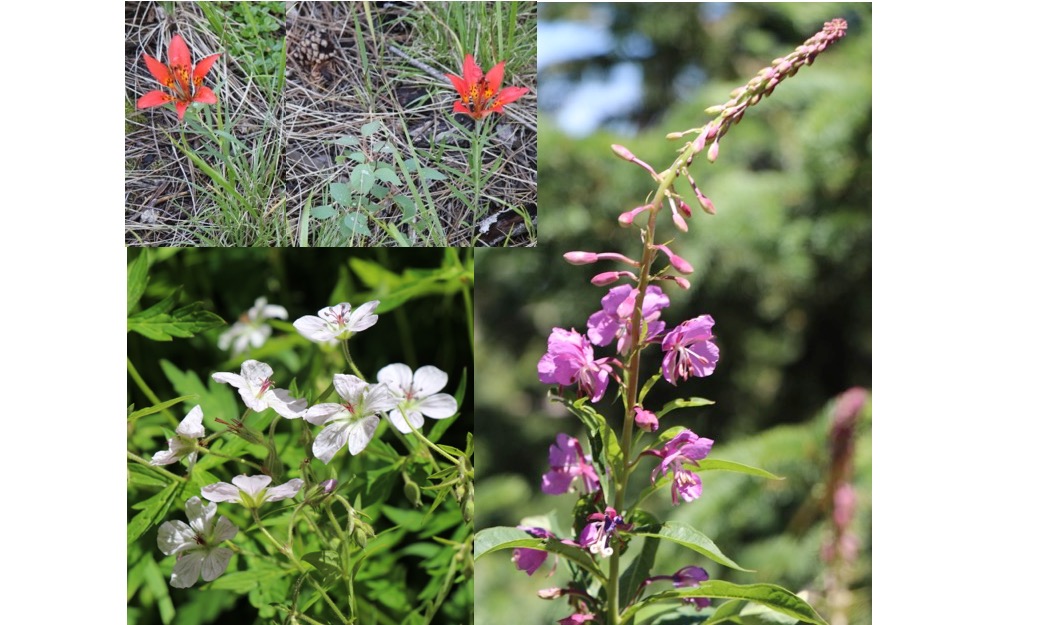| Black Elk Peak, formerly Harney Peak 7,242 feet |
Climbed 7/01/2018 |
We were blessed with perfect weather for our ascent of Black Elk Peak, the highest mountain between the Rockies and the Pyrenees: sunny skies with temperatures in the low 70s. Perfect timing too: a couple of days before, the Black Hills had softball-sized hail; a couple of days after, it was 90 degrees.
The trailhead was at Sylvan Lake, a beautiful spot surrounded by intriguing rock formations. Two trails head to Black Elk Peak from the lake, and we made a loop out of them.

Sylvan Lake
We started along the more southerly trail (Trail 4). We traveled between the rocks, gently uphill through grasslands, wildflowers, and woods, with the Little Devil's Tower on our left and Cathedral Spires on our right.

Among the Cathedral Spires
After the Spires, the trail got steeper as we climbed to the ridgeline. We got expansive views to the south and the east, including the back side of neighboring Mount Rushmore.

The back of Mount Rushmore
As we crested the ridge, our trail met up with the spur trail leading to the summit. We encountered a party on horseback at the intersection; we let them pass on their way to the hitching rail just below the final rocky steps to the summit tower.

Horses welcome at Black Elk Peak
The last part of the trail twists through the rocks via stone and metal steps. The stone tower at the summit was built by the Civilian Conservation Corp in 1938.

The Harney Peak Lookout tower (still Harney Peak in 1938!)
Black Elk Peak is a holy mountain for the Lakota, who still go there for religious ceremonies. (It is also the site where Black Elk had a "great vision" in 1872, reported in his best-selling autobiography Black Elk Speaks.) The summit area has trees and poles with colorful prayer flags tied to them.

Overlooking Cathedral Spires from the summit
We returned to Sylvan Lake on Trail 9. Our leisurely pace enabled us to enjoy the beautiful day and the trailside flora.

Wildflowers
About the name: The Lakota Sioux call the mountain Hinhan Kaga Paha (Making of Owls). Many Sioux had long desired changing the mountain's name, but didn't all agree on what it should be called. After five public hearings of the South Dakota Board on Geographic Names, the board reversed their initial plans to change the name and instead recommended to the federal board to retain the name Harney Peak. However, the name was officially changed to Black Elk Peak on August 11, 2016. The change generated controversy in South Dakota, because a large percentage of the citizens wanted to keep the name Harney Peak and the Sioux were divided. The state still has the option of leaving the peak named "Harney Peak" on state maps.